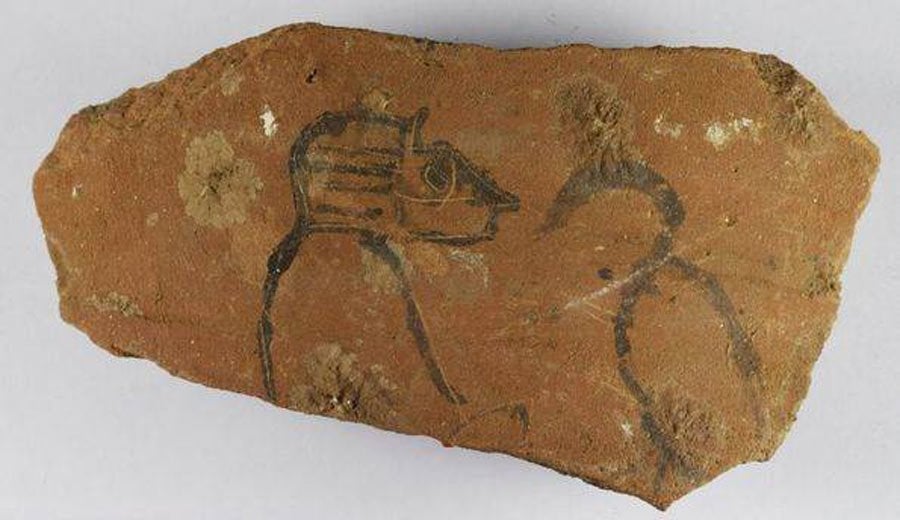An ostracon is a piece of pottery usually broken off from a vase or other earthenware that contains recorded information. There were several ostraca that have been discovered by archaeologists over time. But one remarkable piece came from Ancient Egyptian Times. But what was written on it?
A 3,200-year-old Egyptian ostracon containing explanations for why people missed work was excavated from the ruins of Dale El Medina by archaeologists back in 1823.
What is an Ostracon?
Potshard or limestone flake was used in antiquity, particularly by the ancient Egyptians, Greeks, and Hebrews, as a surface for drawings or sketches or as an alternative to papyrus for writing and accounting.
The drawings on ostracon are usually colored, are of considerable artistic merit, and depict scenes from nature and everyday life, or scenes in which animals appear to parody human actions. (Source: British Museum)
The 3,200-Year-Old Ostracon from Dale El Medina
It appears that calling in sick to work is an old custom. You just can’t make it some days, whether it’s the sniffles or a scorpion bite. It turns out that Ancient Egyptian companies kept track of employee vacation days on tablets.
It offers a workmen’s record for 280 days of the year, labeled ‘Year 40’ of Ramses II. (Source: British Museum)
On display at the British Museum’s online site, this particular ostracon was discovered with thousands of others in the tomb builder’s town of Deir el-Medina. It provides a valuable peek into the life of those who practiced that trade. Brewing beer and his wife was bleeding were typical reasons for absences during the 280 days covered by this 3,200-year-old ostracon.
The ostracon is a limestone tablet inscribed in red and black with New Egyptian hieratic lettering. The days are labeled with the season and number, such as month 4 of Winter, day 24, when a worker named Pennub was absent from work due to his mother’s illness. Another staff was unable to work owing to personal illness. Huynefer was always suffering with his eye, while Seba was bitten by a scorpion. Several employees had to take time off to embalm and wrap up their relatives who had passed away.
Some of the reasons may sound strange to modern ears. A common justification is brewing beer. Beer was a common fortifying drink in Egypt, and it was even associated with gods like Hathor. As a result, brewing beer was a vital activity. Fetching stones and assisting the scribe both took time out of the workers’ lives. Another explanation is wife or daughter bleeding, which referred to menstruation. Men were needed at home to pick up the slack during this period. While one’s wife menstruating is not an excuse nowadays, the ancients appear to have had a similar work-life balancing act to perform. (Source: My Modern Met)
According to the curator of the Brtish Museum, Although the list was made in Year 40, the data is most likely from the previous year. Only roughly 70 of the 280 days covered by the record appear to have been entire working days; the register was most likely compiled from a day-to-day rota kept as notes on smaller ostraca. (Source: British Museum)
